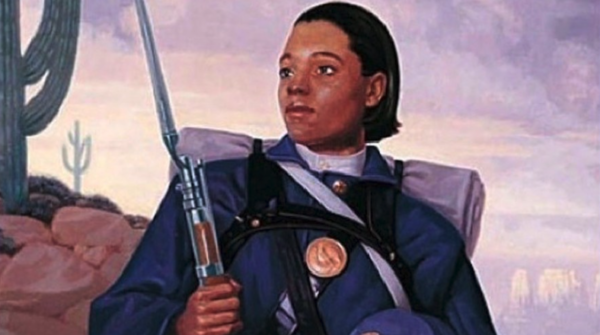
Pvt. Cathay Williams
March is celebrated as Women’s History Month. Women have made significant contributions across various fields, including the military. Throughout U.S. history, women have played vital roles in the Armed Forces, often without receiving due recognition. Nevertheless, women have courageously served their country across land, sea, and air.
Women have a long history of service in the military, dating back to the Civil War. Pvt. Cathay Williams, the first documented Black woman to serve in the U.S. Army, disguised herself as a man to enlist. Despite U.S. Army regulations prohibiting women from enlisting, she informed her recruiting officer that she was a 22-year-old cook, leading to her acceptance into the Army after an examination confirmed her fit for duty. Assigned to the 38th U.S. Infantry, she traveled throughout the American West with her unit.
Similarly, Sarah Emma Edmonds, under the alias Franklin Flint Thompson, served as a field nurse during the Civil War, participating in battles and allegedly acting as a spy. Harriet Tubman’s legacy of bravery includes her service as a spy and leader of military expeditions during the Civil War.
Other remarkable women, such as Elsie S. Ott, broke barriers in military medicine and espionage, respectively, during times of conflict.
In more recent conflicts, women continue to make significant contributions. Army Col. Ruby Bradley, serving as a surgical nurse during both World War II and the Korean War, was taken captive by Japanese forces. Despite her capture, she persisted in providing care for her fellow prisoners, leading to her nickname “angel in fatigues.”
During the Vietnam War, over 265,000 American women served, with approximately 11,000 stationed in Vietnam, predominantly as volunteer nurses. These women faced immense challenges, including treating casualties in dangerous environments. Their responsibilities included treating severe injuries, such as amputations and wounds, as well as providing care for patients on hospital ships and in nearby countries like Japan, Guam, and the Philippines. Some were killed in action, including seven Army nurses and Air Force Capt. Mary Therese Klinker.
Upon returning to the United States, Women Veterans faced hostility similar to their male counterparts, often refraining from discussing their service experiences. Many suffered from health issues such as complications from exposure to Agent Orange and post-traumatic stress disorder.
Brig. Gen. Rhonda Cornum, a flight surgeon during the Persian Gulf War, survived being shot down and captured, later continuing her military career. 1st Lt. Ashley White Stumpf served in Afghanistan as part of a cultural support team, building relationships with Afghan citizens. Tragically, she was killed during combat operations in 2011. Her bravery exemplifies the dedication of women in modern conflicts.
Women have also made significant contributions outside of direct combat roles. Grace Murray Hopper, a pioneering computer scientist and Navy officer, played a crucial role in the development of computer programming languages. Eileen Collins, the first female space shuttle commander, broke barriers in aerospace.
These remarkable women, along with many others, have shattered stereotypes and inspired future generations. Their stories serve as a reminder of the importance of recognizing and honoring the contributions of Women Veterans in the military throughout history.